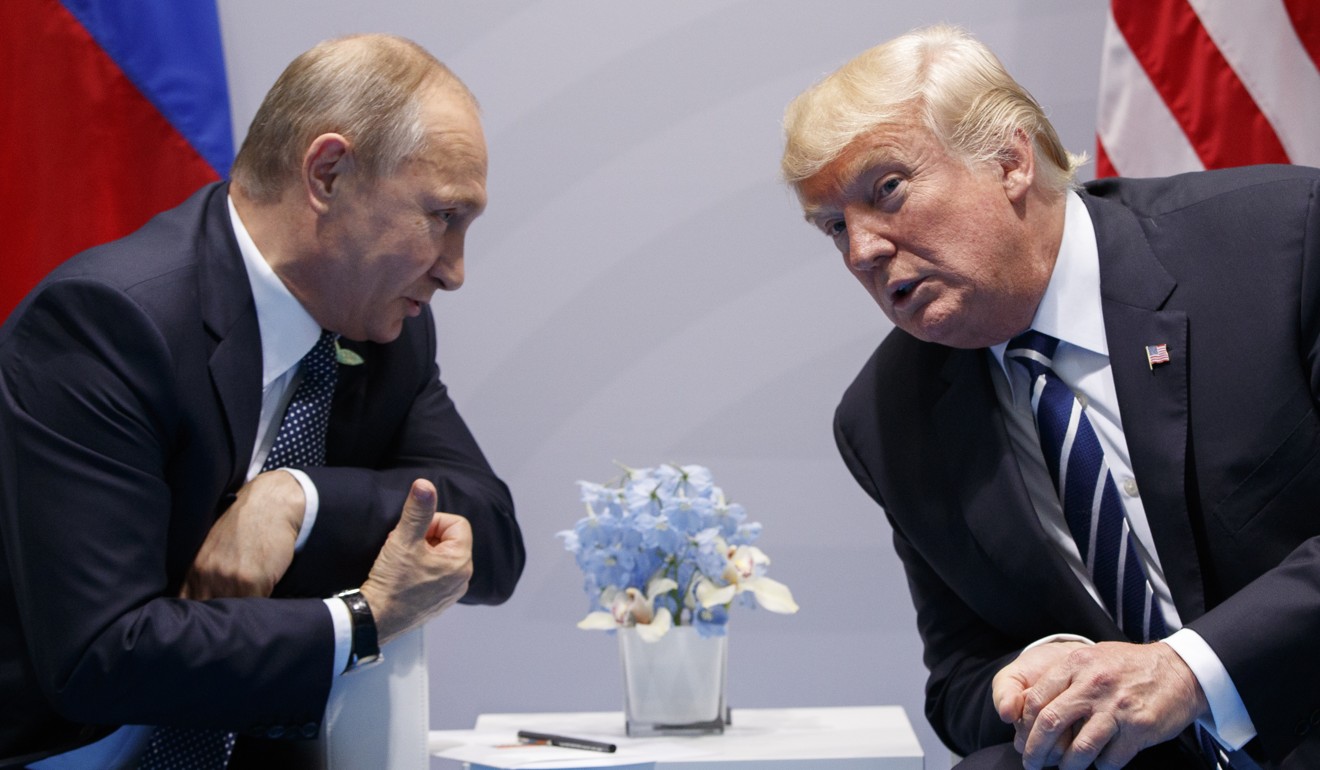
Details of the agreement between Putin and US President Donald Trump Friday to create a de-escalation zone in southwestern Syria remain under negotiation. But scepticism abounds on whether the plan to end a war that in which an estimated 470,000 people have died can succeed where others failed.
Yet something has changed, as US Secretary of State Rex Tillerson said in his comments on the deal, which starts on Sunday with a preliminary ceasefire in areas along the Jordanian border.

Describing the deal with the US as a breakthrough, Putin said at a news conference in Hamburg Saturday that it should become a prototype for a series of zones across Syria that would be administered in coordination with the government in Damascus.
“If we succeed in doing this, we will create an undoubtedly good base and the prerequisites for a political solution in Syria in general,” he said.
Although Putin and all sides are committed to Syria’s territorial unity, the plan would temporarily lead to something like Germany after the second world war, when the allied powers divided the country into four administrative zones, according to Fyodor Lukyanov, who leads Russia’s Council on Foreign and Defence Policy.
“This is the beginning of the soft partition of Syria,” he said. “De-escalation is a euphemism for zones of responsibility, where the different sides will agree which power is responsible for which part of the country.”
The outlines of the Russian proposal approved in Friday’s meeting between Trump and Putin were borrowed from talks between Iran, Russia and Turkey to create de-escalation areas in other parts of the country, Lukyanov said.
Taken together, the two plans represent the Russian military’s strategy for exiting the conflict, Lukyanov said.
They also show how the situation on the ground has transformed over the last year. Syria’s second city, Aleppo, fell back under regime control and the US-led campaign to drive Islamic State (IS) from its self-declared caliphate advanced significantly.
Fight against besieged Islamic State approaches endgame in Iraq and Syria – but Trump still has no strategy
That has left the US with a decision to make on what to do once IS is defeated.
It can wrestle with Iran, Russia and Syrian President Bashar al-Assad for control of recaptured areas of Syria.
Or it can declare mission accomplished, agree to oversee the security of zones near the borders with its core allies, Israel and Jordan, and leave most of Syria to Assad, said Joshua Landis, director of the Centre for Middle East Studies at the University of Oklahoma. Both Russian and US Syria analysts believe Friday’s decision indicates the latter.
“Assad is going to retake most of Syria, and there is nothing the US can do about it,” Landis said. “There is a new security architecture being imposed in the Middle East and Iran is the beneficiary.”
Tillerson said clearly in his remarks after the Trump-Putin meeting that the Syria deal was a starting point for a wider cooperation with Russia after IS’s defeat. The issue then, he said, would be to pacify other areas of the country.
“By and large, our objectives are exactly the same. How we get there, we each have a view,” Tillerson said. “Maybe they’ve got the right approach and we’ve got the wrong approach.”
The agreement could fall apart quickly. The forces who are not party to the deal – including Assad’s forces, Iranian-led militias and al-Qaeda-linked rebels – exist on the ground in southern Syria as well in the North, where a ceasefire crafted by the Russians and the Americans last year collapsed within two weeks.
In addition, so far the only monitors on offer to police the de-escalation zone are Russian. How others might become involved and in what capacity is under negotiation, the State Department official said. The Russian view of how the zones will work is also minimalist and favourable to the Assad regime.


